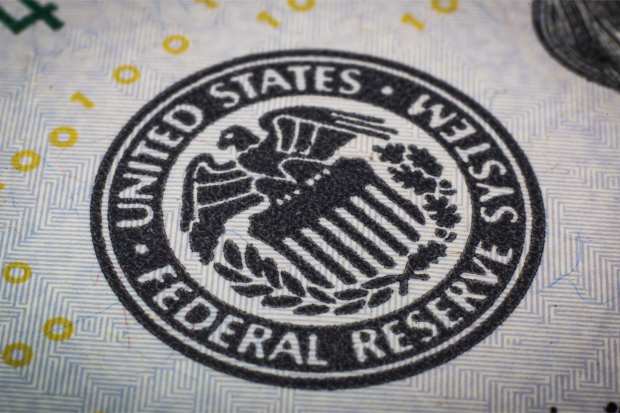Gauging Coronavirus Ripple Effects (And Limitations) On Interest Rates — And Borrowing

This week has seen the twin impacts of panic and policy.
Panic tied to the coronavirus, of course, and policy via the Fed, specifically, monetary policy, designed to grease the rails of commerce that might otherwise be threatened by that panic.
The Federal Reserve, said Tuesday that it cut its federal funds rate — which typically is used as a “benchmark” rate by lenders, who take that rate and layer on a premium — by 50 basis points.
The Fed actions come in response to the coronavirus, which is spreading, and in some corners of business and personal consumption, is proving a headwind. There has been no shortage of companies cutting estimates and forecasts, on the heels of supply chain disruptions and anticipation of weakened consumer demand.
Cutting rates serves as a way of injecting capital into the economy, to encourage consumer spending and business investment. Debt becomes cheaper to service, or even to take on as new borrowing.
In the wake of that cut, the Fed funds rate now stands at a range from 1 percent to 1.25 percent. It stands to reason that credit card debt and mortgage debt — among the biggest components of household obligations that include auto loans and student debt too, should be cheaper.
But the ripple effects may prove slow to, well, ripple.
On one hand, it’s fair to ask just how much lower mortgage rates can go. Mortgage rates tend to be based off 10-year Treasury rates — mortgages, after all, are long-term debt holdings (held over decades in most cases), and the 10-year Treasury has been flirting at multi-year lows. That’s because investors typically embrace bonds as a less risky alternative to equities or other asset classes, and as they buy bonds, prices go up, and yields go down.
In the wake of the Fed’s moves Tuesday, yields on the 10-year fell by 11 basis points and stood at an all-time low of less than 1 percent, at 0.906 percent. At this writing, the yield is 96 basis points. And the hallmark of the mortgage industry, the 30-year fixed mortgage?
Well, that’s at just under 3.6 percent, per data from the Mortgage Bankers Association, and as cited by CNBC, down from 3.7 percent last week, and the lowest rate in seven years. That means that homeowners financing into lower-cost borrowing can free up capital for other purchases. Variable interest rate debt, including some types of mortgages and home equity lines of credit, also become cheaper, as payments reset. By way of comparison, rates were at 4.7 percent a year ago.
The ripple effect comes across several avenues. Most immediately, in the form of refinancing activity, which even last week — before the Fed actions — was up 15 percent. It stands to reason that the flurry of activity would continue into the current week and perhaps the weeks ahead. Applications do not always translate into completed refinancing, of course, but the demand indicates at least some consumer appetite for debt. Banks, of course, will see an uptick in mortgage related activity and revenues.
More immediately, the home equity lines of credit, which price off of the Fed funds rate rather than the Treasury rate, would reprice quickly — and, tied as they are to things like additions and redecorating, would have a positive ripple effect for retailers spanning the luxury goods and home improvement verticals. There’s a wild card here, though, and a limitation inherent in monetary policy, as the coronavirus may slow such new initiatives (and, well, the human contact that comes with putting in a new bathroom or rec room, or re-sizing the drapes in-store).
The Credit Card Factor
Credit card debt, in the wake of the emergency cut, also gets cheaper, at least for those who are not paying off their balances in full each month. The annual percentage rate is of course variable, and rates, reset lower, means the interest paid lessens. U.S. credit card debt stands at just under $1 trillion, per data from the Federal Reserve, which means that the average household carries (as estimated by WalletHub) $8,700 in balances — paying a range of interest in the high teens to more than 25 percent for higher-risk borrowers. As noted in this space, seriously delinquent debt stands at 5.3 percent, the highest level in eight years — indicating that borrowers might find the (somewhat) cheaper debt burden a relief.
The question remains as to whether credit card debt will indeed become cheaper. The jury at present is out on that trend. It should be noted here that despite the drop in interest rates, credit card interest rates are near an all-time peak, at around 17 percent. That stands in stark contrast to general interest rates, which have moved lower. At the same time the U.S. economy has expanded across more than a decade, unemployment has remained low, and wages have risen, the consumer has taken on more debt. Lenders have increased rates, a sign of risk, in the meantime.
One area of activity that bears watching: personal loans and debt payoff. Generally speaking, personal loans are cheaper than credit card debt, and have been used as a way to accumulate the funds to pay down more expensive debt. Should those loans get cheaper, to entice more volume, at least from relatively higher credit borrowers, firms like LendingClub may reap the benefits. Late last year we noted that consumers have been taking personal loans out at a record rate, where the money is used to pay off other expenses. Equifax has reported that those loan balances have topped $115 billion, and those loans have been growing at double-digit percentage rates.
